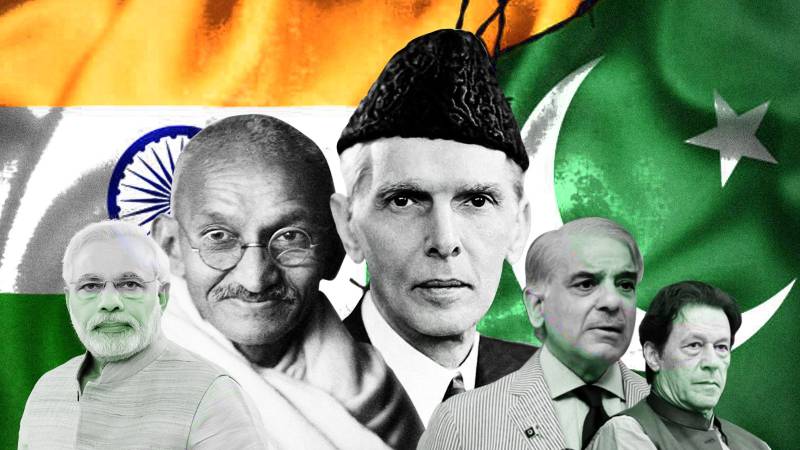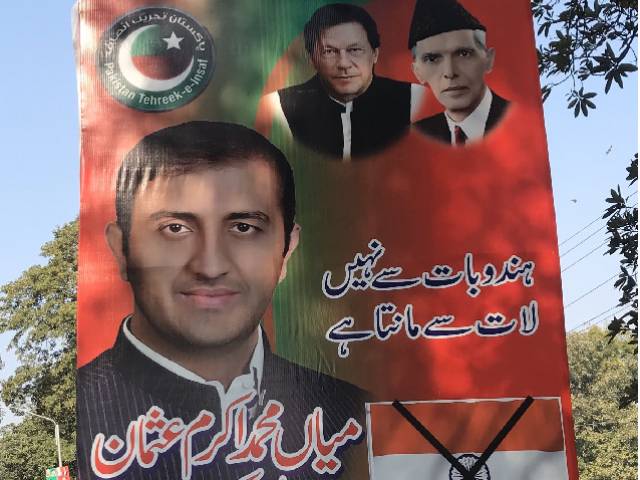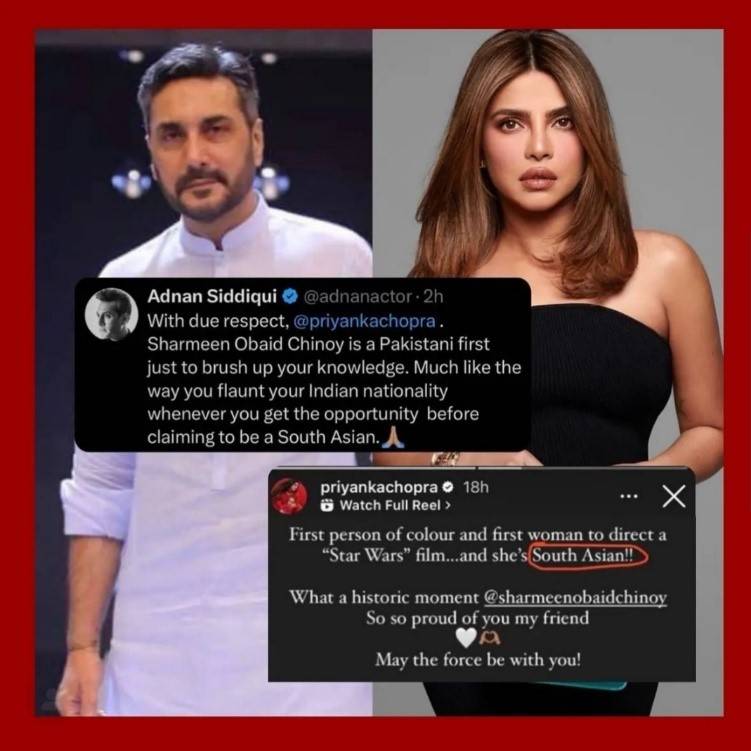
As both India and Pakistan engage in independence festivities, there’s no more appropriate a time for each to revisit their seventy-six years old nation-building project, in light of navigating the long-standing regional bitterness, communal unrest and bilateral economic dormancy.
Watching a historical Pakistani movie in cinema, alongside your fellow countrymen, could be revelatory for your nationalistic intuitions. I have had a similar experience of exploring the historical mindset of average Pakistani men and women, earlier this year when I went to watch the recently released Huey Tum Ajnabi. The plot is set in the backdrop of semi-fictional events encompassing the political turmoil of 1971 and the subsequent separation of East Pakistan.
As the film began, I started getting roiled by the frequent conversation between a mother and her two toddlers, sitting on my immediate right. As typical of Pakistani parents, the mother was paraphrasing the scenes to the kids who seemingly had no prior understanding of the events of 1971. When Samina Pirzada, performing the role of Indira Gandhi appeared on screen, the kid asked: “Mama, is she a good person?” “No, she’s a Hindu, a very wicked lady in history,” mother replied. Since the plot orchestrated the separation of East Pakistan as an Indian conspiracy, so the bad characters were the Hindus, operating their liberation espionage as disguised Muslims from various parts of East and West Pakistan.
Being affiliated with orientalist academia, I've spectated the events of 1971 from the neutral lens of Western researchers and authors. The cinema experience that day not only unraveled to me the extent of bigotry in local discourse around historical events, but also gave me the pretext to dissect our nation-building project.
The antagonization of Hindus in Pakistani movies is dialectically linked to our nation-building project since 1947, in pretext of the partition violence borne by the first generation of Pakistanis. The way we often narrate the events of the past to our kids is predicated on this same formula of Hating the Hindu, as part of our national discourse. As an eight years old kid, I was once forbidden to watch Indian dramas by my grandmother. The reason being that "they meted out so much violence on us during the Partition.” This trauma of Partition has passed on from one generation to the next and still counting.
Pakistani media is next in the loop in amplifying the traumatic past to keep rejuvenating our patriotism from time to time. Every year on the eve of Independence Day, we get our annual dose of nationalism via the inoculation of movies, dramas, patriotic songs, or spell-binding speeches, all of which aim at reminding us of the excruciating sacrifices made for our freedom. None of this is unreasonable or obnoxious, unless when it comes bundled with sectarian hatred and religious intolerance.
The practice of exhibiting nationalism in Pakistan sometimes costs our Hindu minorities their religious and fundamental guarantees. Our earliest memory of Partition learnt at school was that “Partition happened because Hindus and Muslims couldn’t live together in united India,” additionally, “Hindus used to religiously persecute us.” Moreover, “dushman" (foe) is the metaphor, most invoked for the Hindu community in our Pakistani state books.
This negligence of not distinguishing the term ‘Hindus’ here from the RSS ideologues and their violent adherents, culminated into irreconcilable grudges against the entire Hindu community in these seven decades. To analyze this flawed method of teaching history in Pakistan, BBC Urdu conducted research among five Hindu youngsters to navigate their experiences of studying Pakistan Studies courses during the school era. Each one of them recalls the bigoted and scornful perspectives about their community that they got to study in their books. The prejudiced school curriculum serves as a humiliating trope from their school times, caused them alienation among friends.
Rajesh Kumar, cited a Pakistani school textbook that described Hindus as ‘kafirs’, meaning idolaters or those who worship idols, and alleged that “Hindus were misogynists who buried their newborns alive if they happened to be girls.” While Dr. Rajwanti Kumar, a Hindu girl in Pakistan, said that she was often jeered at by her classmates because she was a Hindu. Some of her classmates even asked her to celebrate Independence Day not on August 14 but on August 15, India’s Independence Day. All Hindu youngsters conceded that their loyalty to the state has always been challenged for being culturally and religiously near to their Eastern neighbors.
https://www.youtube.com/embed/CFWOV7L6Yw8
While subscribing to this bigoted narrative, we inadvertently have assimilated our sense of patriotism with ‘hating the Hindus’, forgetting that near 4.5 million Hindus reside in Pakistan, having an equal entitlement over this land, its resources and culture, as much as we in the ‘green majority’ do.
Whereas, on the other side of the border, in India, the nation-building curriculum is not much disparate from ours. Kids like Triaksh Mitra learn about Mahatma Gandhi's resilient stance over a unified India, free from British subjugation, while the “Muslim League -- the political party led by Pakistan's founder Muhammad Ali Jinnah -- sided with the colonial rulers to carve out their own nation.”
Indian teachers also testify to the enormity of contradictions in the syllabus of Indian published history books. Aashish Dhakaan, who teaches History in a high school in India's Gujarat state, acknowledged that the “creation of the Muslim League was popularly upheld as self-reliance and liberty in Pakistan, and the folly of gullible Muslims in India.”
Where Pakistani books provide none to perfunctory introductions to Gandhi, the Indian autonomous educational regulatory body (NCERT), under the federal education ministry, has made a brazen attempt to downsize the mention of Mughals in school-level books, while completely omitting the longest-serving subcontinental dynasts from the higher educational curriculum. In a similar vein to the Pakistani nation-building project, spirited by the trauma of Hindu mob violence during partition, the Hindutva Project in India capitalizes on the “Mughal oppression against Hindus” to provide nationalistic vibes to their audience.
These fallacies in their respective nation-building projects have given rise to communal unrest, religious intolerance and minority persecution in both countries while making the 'hate for neighbors', an unsolicited part of their nationalistic understandings.
In Pakistan, minority sects often face arbitrary legal and religious persecutions like false blasphemy charges, while forceful religious conversions are particular in the case of Hindus. According to a report from the Movement for Solidarity and Peace, about 1,000 non-Muslim girls are forcefully converted to Islam every year, while every month an estimated 20 or more Hindu girls are abducted and converted. Moreover, in a paranoid move, the HEC has recently suggested putting an embargo on Holi celebrations across universities, while calling the festivities, a “complete disconnect from our sociocultural values and an erosion of the country’s Islamic identity.”
Unfortunately, the politicians in Pakistan have capitalized the most on the "Hindu hate." The conspicuous display of this one gets to watch near the polls when politicians, in order to bag maximum support, amplify their anti-Indian discourses, while not segregating the Hindu community from political point scoring.

Though the ex-MNA Akram Usman later owed an apology to both the Hindu community and his party leadership, but the insecurity which the election flyer caused to the Hindu community was nevertheless irreparable.
Likewise, Indian leaders also practice xenophobic ploys to tease the minority Muslim community in India. Last year in July, ex-BJP member Nurpur Sharma, in a sacrilegious move, spoke incendiary words about the Holy Prophet and his wife Aisha which then set the country on fire.

A demonstrator stomps on a poster of Sharma during a protest in Mumbai. Source: Reuters
Such brazen attempts to hurt communal sentiments co-exist with the disadvantaged position of that community in a region. Muslims in India are unarguably a persecuted minority group, often facing “arbitrary deprivation of life, torture and cruel, inhuman or degrading treatment, gender-based violence and discrimination, hostility and violence, discrimination in laws and policies, violations of freedom of religion or belief, indiscriminate citizenship rules” and so on.
While the Kashmiri persecution has already been persistent since 1947, the revocation of Article 370 in 2019 added further insult to injury. The blatant attempt was a move to manipulate the inherently Muslim-centric demographics of the region to malign the results of the plebiscite, if happen anytime in future.
Other than Kashmir, the other contentious regions have been Uttar Pradesh and Gujrat. Both regions faced the largest outbursts of violence in 1992 and 2002, in the backdrop of the Babri mosque demolition and Gujrat riots, respectively. Both conflicts were instances of religious intolerance and ended with the killing of hundreds of Muslims.
This catastrophic condition of respective minority groups in India and Pakistan stands as a testament to the flawed sense of nationalism prevailing among both nations. While the governments of both sides are capitalizing on neighbor rivalry for the obvious political gains, it's serving nothing to the common man other than communal unrest and religious hate.
The India-Pakistan rivalry in the backdrop of our strained regional history, has recently infiltrated the entertainment industries of both sides as well. Since the Uri strike controversy in 2016, the Indian-Pakistani media has been incommunicado with each other. Nevertheless, the sporadic social media skirmishes between actors provide a medium of engagement for both sides of netizens.
April this year brought good news for the entertainment industry as Shirmeen Obaid Chinoy was announced as the first person of colour and the only woman to direct one of the epic Star Wars films. Out of the blue, the fans in India went gaga over this sub-continental win. But things got heated when a senior Pakistani actor, Adnan Siddiqui ruined the feeble, though long-awaited chance of cross-border media rapprochement.

Adnan Siddiqui’s contention here that Shirmeen’s Pakistani identity supersedes her South Asian one, doesn’t only reflect his nationalistic paranoia, but is also a delusional take on history. Pakistan is a home to people who originally hailed from South Asia and in that way, our regional co-existence with Indians is historically inescapable. Moreover, identity, as it first belongs to a person than any inanimate stuff or trope, is changeable just like other humanistic instincts. No one can be restricted to fixed proclivities and temperaments forever. Hence, associating oneself to a certain geopolitical region for the time being, doesn’t necessarily come at the cost of their national or any other esteemed identity.
This ultra-nationalist chauvinism has also provided outright damage to the bilateral economic exchanges between India and Pakistan, bringing both to a state of almost economic dormancy. It should be nerve-racking for them that the most conspicuous rival countries are making billions of dollars together in trade, while they keep contemplating new ways of cross-border volatility.
As per reports by Trading Economics, the United States conducted trade worth US$15.07 billion with Russia in 2022. While US exports to China increased at a remarkable rate of 1.6% last year. While the trad evolume between regional foes China and India amounted to $135.98 billion, driven by a 21% rise in imports into India from China. Comparatively, Pakistan's trade with India stood the lowest at US$629.46 million.
In today's global trajectory, transnational relations have transcended religion, history, politics, or those diplomatic compulsions which world leaders once used to heed, but no more. It's an era of economic supremacy, where those countries which don't intertwine their economies with geopolitical tussles prevail.
Ahead of 76 years of their Independence, Pakistan and India must take stock of the situation and straighten their ties across all fields. Where the Kashmir matter does not trespass diplomatic channels, other routine institutions should explore ways of cross-border collaboration. The way Pakistan’s economy is slumping with every passing day, and India is losing its global repute for employing fascist ploys, the incentives for forging alliances are higher than ever before. A collaborative approach will bring tolerance and congeniality for the minorities of both sides and consequentially, peace will proliferate in the South Asian region, which people of both India and Pakistan inherently belong to.

